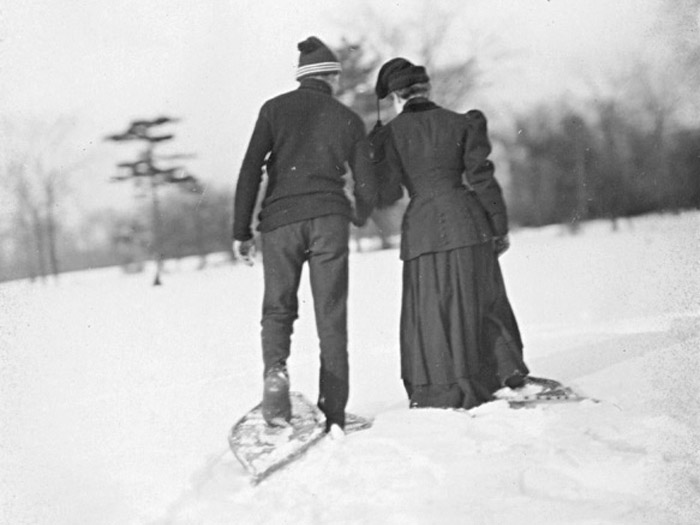Village News
Winter Now and Then

As we move past this current cold snap, we have a lot to be thankful for. Our houses are insulated, we have gas, wood and electric furnaces that provide heating throughout our homes and transport that keeps us out of the wind. A hundred and fifty years ago (1874) it was much harder for our settlers to stay warm. Just imagine in 1874, the Mennonite villages of Manitoba (ie. Steinbach) were only a grouping of semlins (sodhouses). Arriving in late summer there was not enough time to build a log house.
The semlin, a semi-subterranean sod-hut, was a dwelling form used by Mennonite settlers in each of first migrations including Prussia and Canada. Upon arrival in Manitoba some Mennonite families used tipi-like tents for shelter until the semlin was built. Some families lived in the sod-hut until the following spring, when a more permanent dwelling, such as a log house, could be constructed. Others had no choice but to remain in the semlin for up to six years. The length of inhabitation depended on availability of building materials, financial means, and the season of arrival. During cold snaps like we just had, farm animals were also given shelter in the semlin. Imagine sharing your food preparation and sleeping space with a couple cows or goats.
Children were required to help in every way possible; they learned practical skills by doing. The older children helped with hauling timber from the bush and constructing shelters. They had to learn what kind of fuel to gather for cooking and heating, and they helped to fill the cracks of the semlin with mud to keep out wind, snow, and rain.
While settlers worked hard at keeping warm, we humans are born chionophobes (snow-adverse). Our skin doesn’t withstand cold, and we have a hard time walking through snow more than six inches deep. However, over time our culture and innate abilities help us develop ways and structures to survive – thank you ancestors! We’ve even developed cylindrical machines to take us far south during these cold months – thank you Boeing!
Snowshoes enable us to get through the same winter terrain that chionphiles (snow-lovers), like caribou and snowshoe hares, are adapted for. I don’t think the ancestors of the Métis, Cree, or Ojibwe could have lived in the Manitoba’s northern boreal forest trapping, fishing, and hunting without the means of getting around in the winter. Have you ever tried walking miles through deep snow? The centuries-old snowshoe is one of those rare “perfect” technologies that modernity can do little to improve. This Saturday at Mennonite Heritage Village (MHV), we will talk all about snowshoes and take a tour with them. You can bring your own or use ours, we have child, youth and adult sizes.




